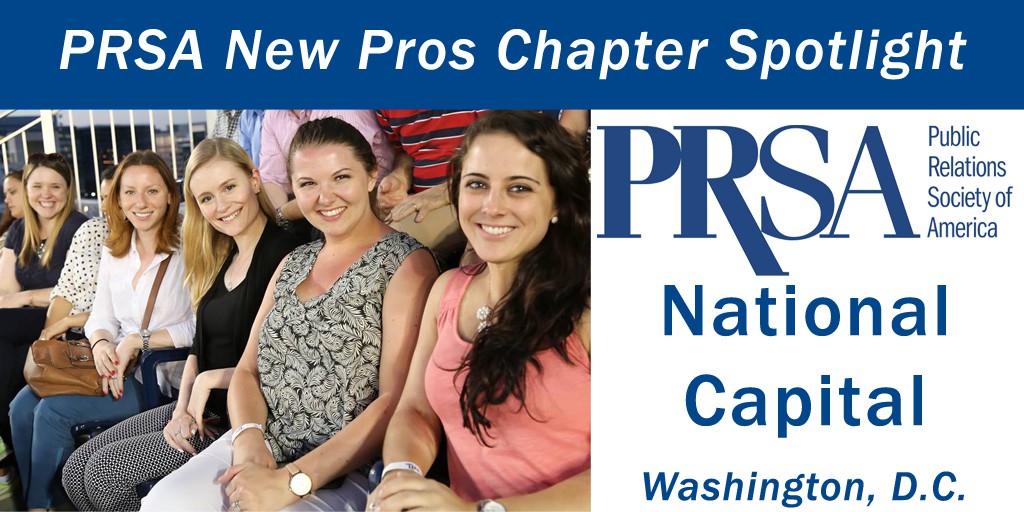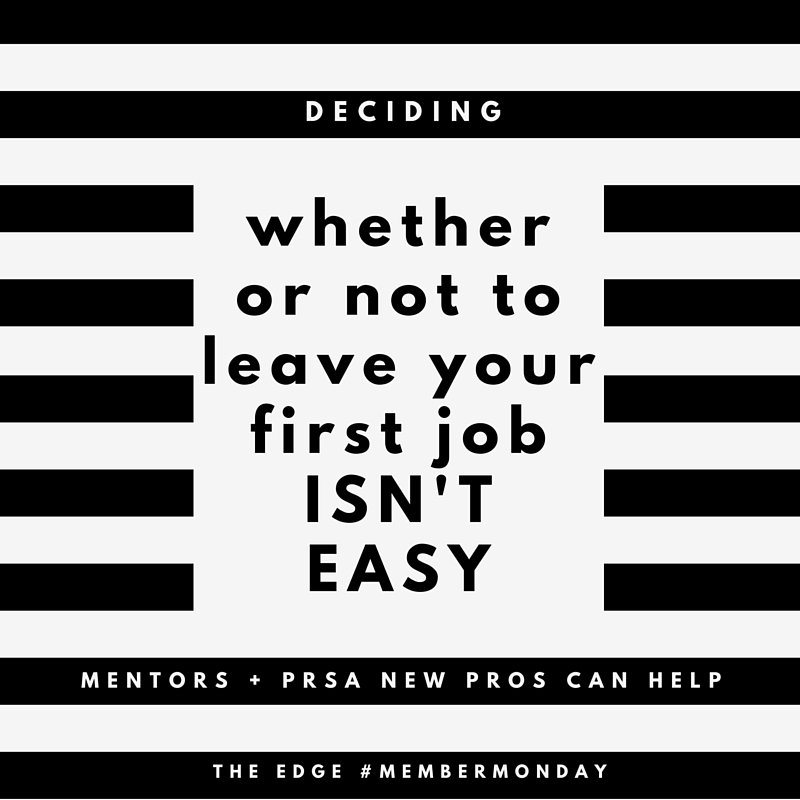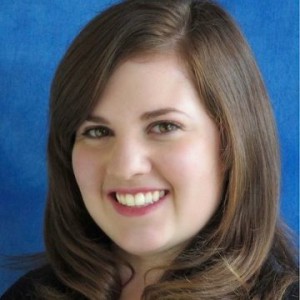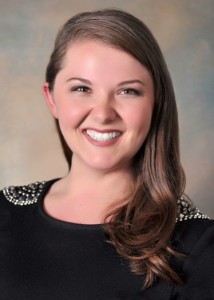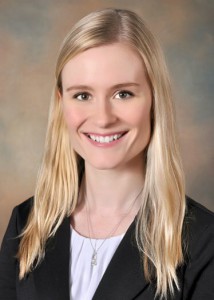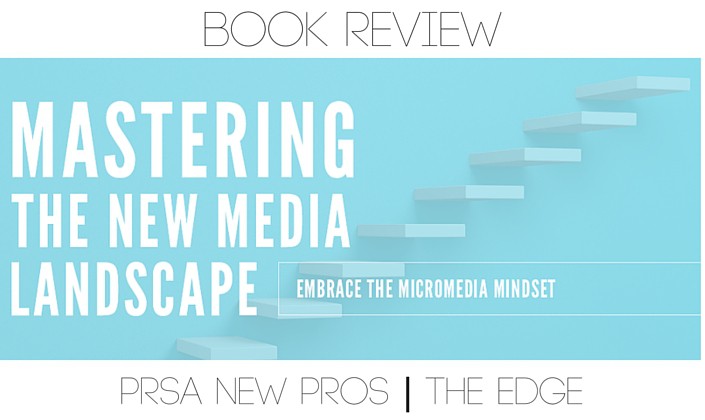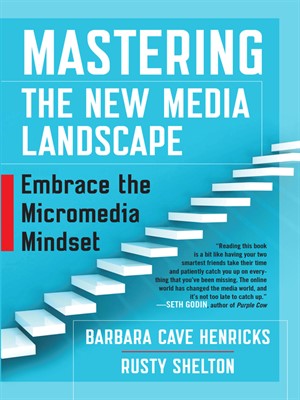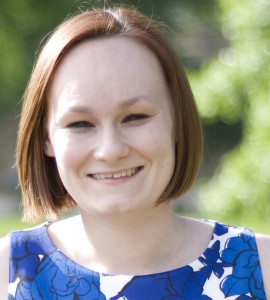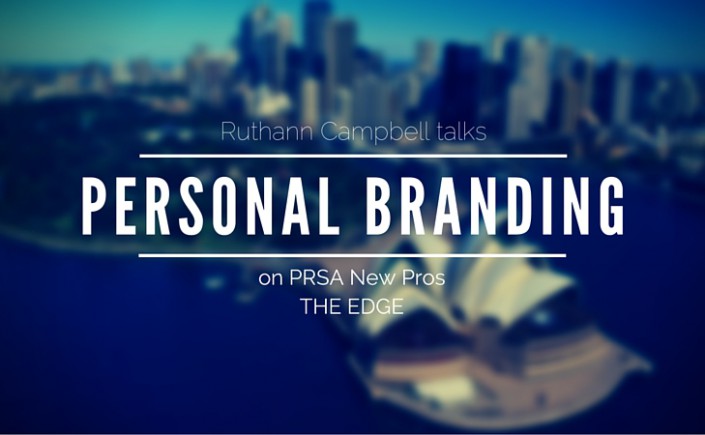New Pros Week is right around the corner and what better way to get everyone excited about it than featuring PRSA’s National Capital Chapter’s lively New Pros group. This month, The Edge sat down with PRSA NCC’s New Professionals Committee Chairs Katelynn Wiggins and Kelsey Pospisil.
The Edge: Tell us about the National Capital Chapter’s New Pros Committee is organized?
National Capital Chapter: We have a core group of really active committee members. They help secure locations for networking happy hours, panelists for professional development events, and help with logistics and registration during events. It is helpful to have involved committee members because with everyone’s busy schedule, typically two people are able to help us with each event.
TE: What kind of programming have you put together for New Pros?
NCC: Most of our activities are networking happy hours at local bars and restaurants. We also offer a few annual events. Headshots & Happy Hour offers attendees an opportunity to get a professional headshot taken while they mingle with other new pros. Professional development events provide information specific to the new professional audience on topics affecting their careers such as personal branding, resume building and presentation skills. The annual baseball networking event is a big hit with chapter members at all stages in their careers. It gives attendees to network in a more relaxed environment and enjoy a game with their fellow chapter members.
TE: How does your group fit into the bigger picture of the chapter?
NCC: The New Professionals group works with many other groups in the chapter. We frequently partner with the Membership committee to offer networking happy hours. We also partner with the University Relations committee to help transition students from PRSSA to PRSA.
TE: What resources do you provide for New Pros?
NCC: The chapter provides new professionals with a mentor-match service operated by our Mentoring committee. We also share job openings with committee members. We encourage more seasoned members to come to New Pros events if they are looking to hire entry or mid-career professionals.
TE: How can New Pros benefit from being involved with their local chapter’s New Pros group?
NCC: The PRSA-NCC New Professionals group is a great place to meet other people in the same stage of their career. It is nice to network in a relaxed environment to exchange ideas and learn from other new professionals. Members have told us they found out about open jobs at our events, and we know of many that have turned into being hired. We facilitate opportunities for people to form, maintain or grow relationships. If you’re eager to connect with other people, we’re just giving you an outlet, and helping you grow professionally at the same time.
Your local New Professionals group is a great way to get to know other people who are going through the same challenges, excitement and career growth you are. As a new professional in the world of PR there is a lot you can learn from connecting and building relationships with other like-minded people.
TE: How do you engage and recruit New Pros?
NCC: Near the beginning of each year the chapter hosts a Membership Rally. We have a table where members can sign up to join the committee. We also have information about joining the committee at all of our events.
TE: What advice do you have for New Pros for using PRSA to their best advantage?
NCC: Definitely make time to attend networking events offered by your chapter. It is the best spot to meet other people in the field. You may even make a contact that could help you find a new job down the line. It’s also a great place to find firms to contract for your company.
TE: What is the best way for New Pros to get involved in the PR community?
NCC: Attend your local chapter events and make an effort to introduce yourself and get to know as many people there as possible. Another way to get involved is through Twitter chats hosted by the National New Professional section. We always say that you’re going to get out of PRSA what you put in. The people and resources are almost infinite, but it’s up to you to take advantage of them.
If you’re in the D.C. area and would like more information on getting involved with the National Capital Chapter’s New Pros group, email Kelsey and Katelynn.

